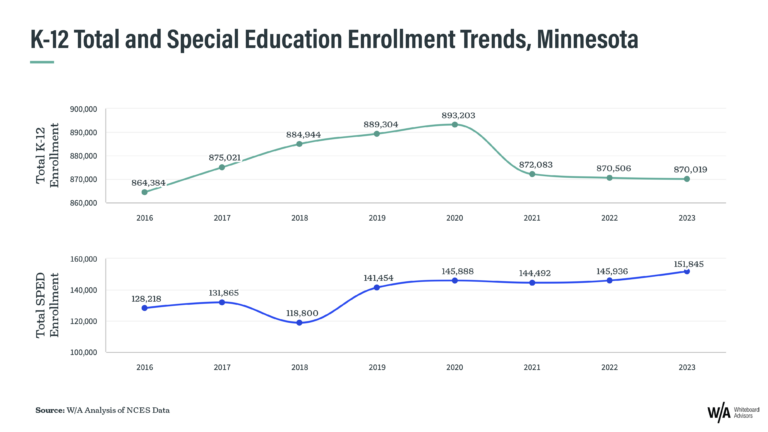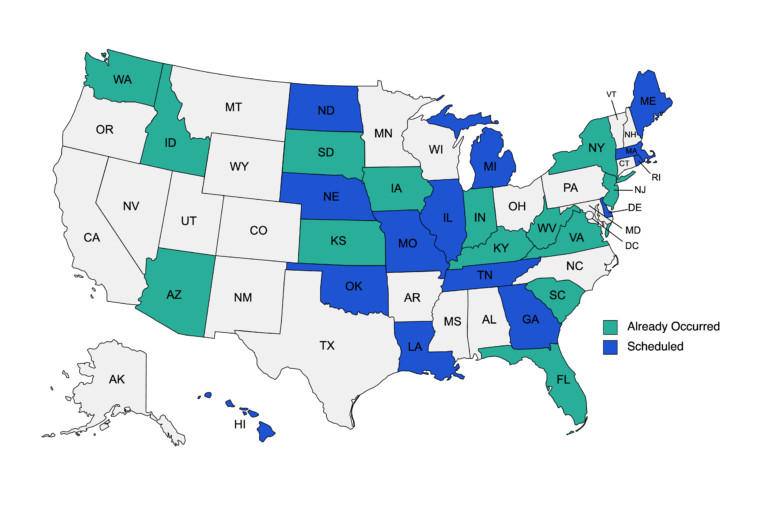With stimulus funds evaporating and enrollments (and revenue) declining, school districts are grappling with difficult budget choices. There’s plenty of stimulus coverage, but if you want to unpack more details, consider the outsized influence of special education on budget decisions. Here are some key points.
- Growing Numbers: The number of children identified with a learning challenge is rising. According to federal reporting, special education enrollment has grown steadily since 2016. Nationally, the number grew from 6.8 million students in 2016 to 7.6 million in 2023. The individual state trends can be starker. In Connecticut, the percentage of students with a disability went from 13.9 percent of total enrollment in 2016 to 17.3 percent in 2023. In Minnesota, it went from 14.8 in 2016 to 17.4 percent in 2023, and some states get into the shocking range. Delaware, for example, went from 15.3 percent to 19.4 percent.
- Special Education is Expensive: The rising number have serious budget implications. Many reports try to tease out the costs of educating students with learning and attention issues. You could slip into this rabbit hole or take our word that most of the reports find that, on average, the cost is three times that of a non-identified student—and the “average” likely doesn’t take into account all the actual explicit and hidden costs.
- Unfunded Federal (and State) Mandate: Neither federal nor state lawmakers are providing enough funding to cover the “excess costs,” or costs above and beyond what it takes to educate the average student (acknowledging that this “average” student is a fiction).
The federal Individuals with Disabilities Education Act (IDEA) is supposed to cover 40 percent of the “excess cost,” but the actual funding has never been near that. Today, IDEA covers something near 14 percent of that cost. State special education funding is supposed to cover most of the excess costs, but it too has been insufficient.
Consider how many states have committees and working groups to understand and address rising special education costs. Colorado, Kansas, and Maryland have made recent headlines, but the issue of inadequate funding is before every-state, every-year.
The costs of special education are ultimately a local matter. When exceptional student funding falls short, local school officials must figure it out. Often, they tap into general revenue funding and whatever else is available. Given falling revenues and rising student identification, that’s happening more and more often. This brings us back to the beginning: Do you want to really understand local budgets? Appreciate special education’s role.




